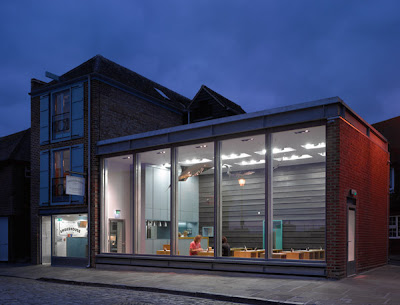For our final project of third year we had the chance to
write our own brief and design whatever we liked…within reason. Our only
constraints came from our module title, ‘Partnerships Networks and
Connections’. We therefore had to ensure that whatever we were designing we had
to design with people/potential clients in mind. We were encouraged to reach
out and talk to people in industry, people who would potentially use the space
we were designing and anyone else that could influence our design process. I’m
glad this module encouraged us to do this as it pushed me out of my comfort
zone, helped build confidence and also got me to design with the public,
something students are not often used to but will have to do once they are
professional designers.
I decided to design a reading space for children as I found
through research that it is greatly needed. I discovered that 6 million adults
in the U.K.
can’t read properly which means they can’t carry out the simplest of tasks,
this stems from their childhood. At the moment 1 in 5 teenagers leave school without
basic literacy skills.Getting children to engage with books and read early in
their life, in ways that they enjoy will ensure they continue to read
associating it with pleasurable experiences. Spaces can be used to generate
excitement about reading and an environment that is flexible for the individual
will give each child the opportunity to learn. I proposed to design a fun
interactive space within St. Mary’s Primary School, Lochee, where children will
be able to read, play and learn. If the reading space is a success it could be
later implemented into other schools.
I began looking at other designers work for inspiration,
finding out about, the best way to display a book, the areas where children
like to read and how they might travel through the space. A couple of my
favourite examples were, ‘The Library of Picture Books’ by Tado Ando and ‘Kids Republic’
bookstore by SKSK Architects. In the ‘Library of Picture Books’ the books are
all shelved with their covers on display to attract the children’s attention. ‘Kids Republic’
is an example of a fun environment that encourages children to read as well as
acting like a playground.
To carry out more research I went to St. Mary’s Primary
School in Lochee to ask the children I was designing for what they wanted. I
hoped this would generate a lot of exciting ideas. The primary four class were
very helpful and I asked them to complete two tasks for me. Firstly I handed
them a piece of paper with the outline of a book and wanted them to draw me
their favourite book. I then gave them another piece of paper and asked them to
draw me a place where they would like to go to read their book.
This exercise proved
that kids have so much imagination and they are all very different from each
other. A fun, flexible space that feeds their imagination must be designed.
Taking inspiration
from stories, storytelling techniques and patterns a reading experience has
been created. The space is divided into 3 sections; the beginning, middle and the
end. A continuous path that flows through each section represents the storyline
showing the ups and downs (this is also shown physically) until it reaches its
climax that leads the children to the calm in the final section.
Section one of the space is where the children will find a
book they want to read. Children can enter
this magical space by crawling through a little red door. Once inside they make
their way through the forest of books selecting one they’d like to read.
Zone 2 is fun and colourful. Children can read their chosen
book wherever they feel comfortable. Climb up and read in the pod or swing next
to their friends in the cocoons. Head phones and iPads are also provided for
those who want to listen to a story privately or they can gather round the storyteller
for group reading and participation.
After children slide into the final space they will be
encouraged to reflect on the book they’ve just read. They can discuss, draw,
write or even put on a performance, ensuring they leave having gained something
from the whole experience. Snapshots of their experiences are recorded. Before
they drop off their books they can check out other children’s adventures on the
“Golden Book”.
“You cannot predict
the outcome of human development. All you can do like a farmer, is create
conditions under which they will begin to flourish.” - Ken Robinson.
I felt that quote by Ken Robinson summed up my project. You
can’t force a child to read but you can give them the right materials and
environment and hopefully they will want to continue. I hope my design will get
kids reading and enjoying it.
If you want to see more information about this project you
can check out my project blog
here.





































